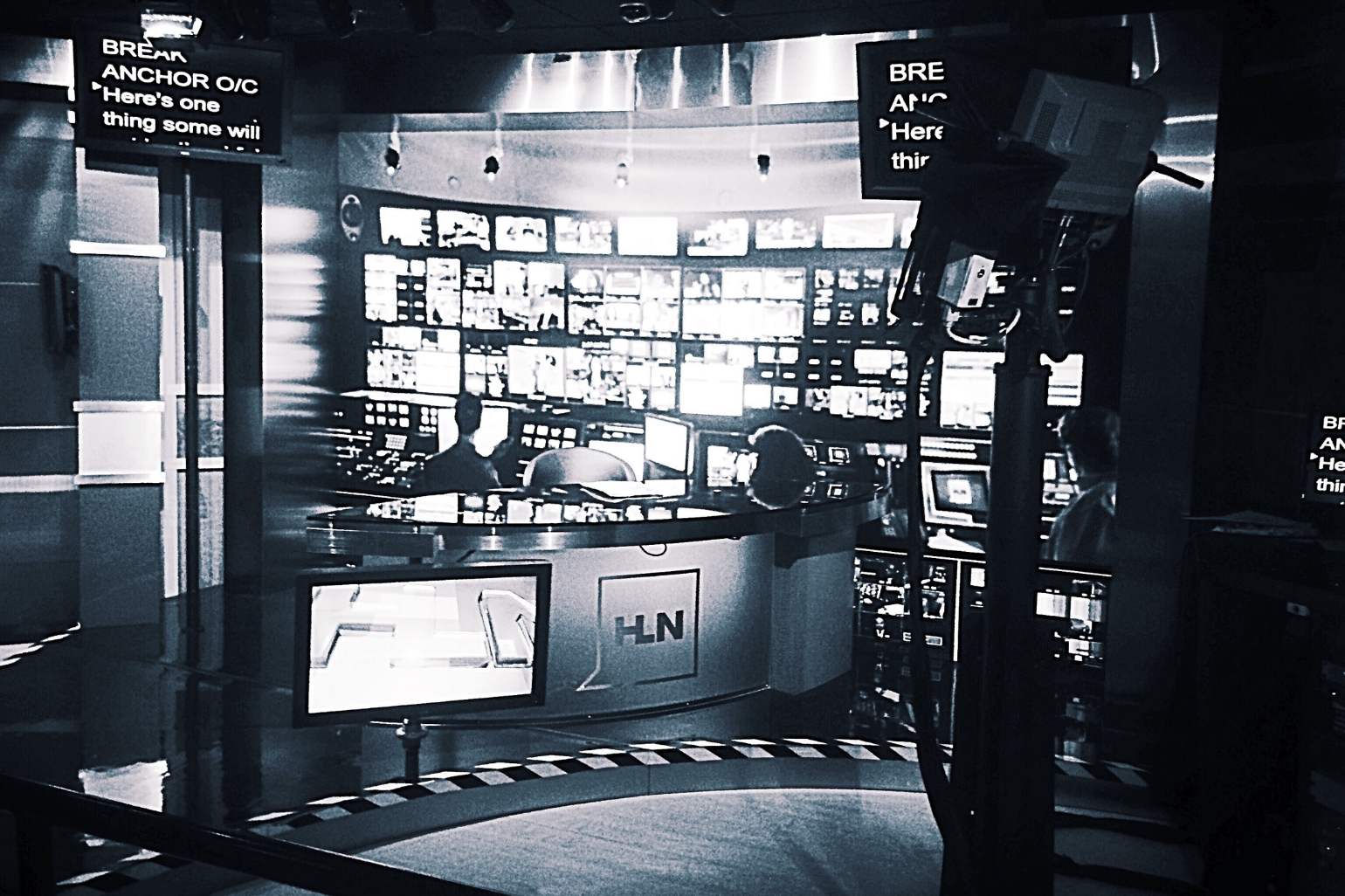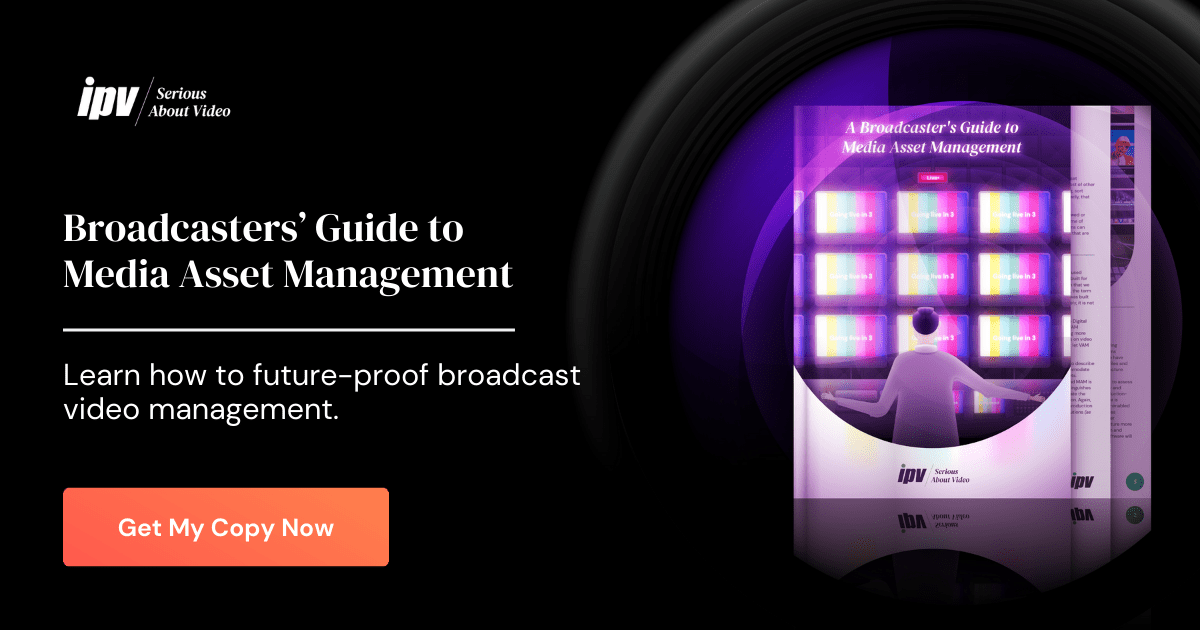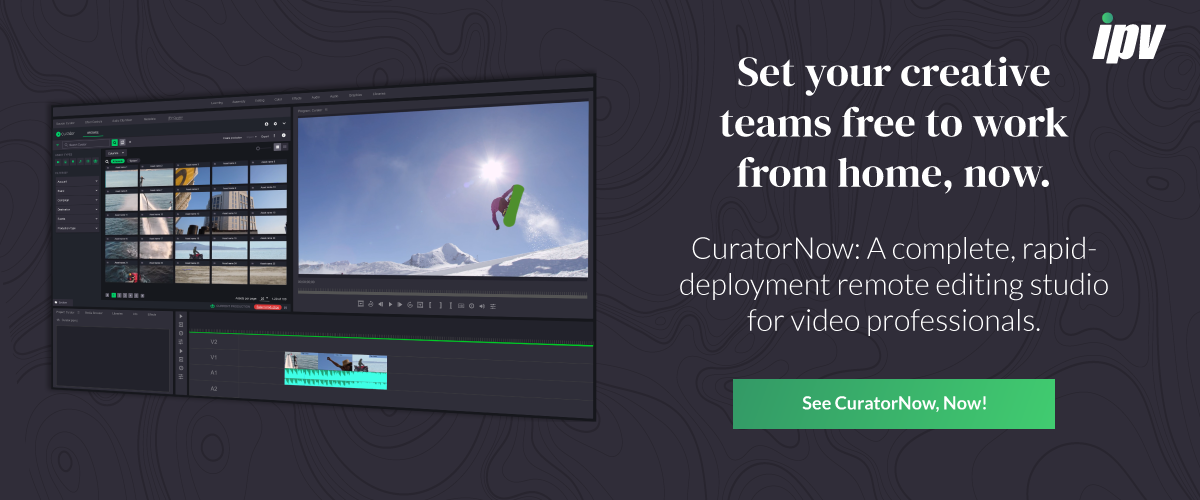
Media asset management (MAM) software is a critical tool to optimize video production workflows. In the current environment, in which industries of all kinds are scrambling to re-tool in order to accommodate work from home requirements, investment in cloud-based MAM is skyrocketing.
Periods of disruption are a great time to adjust processes and align with emerging technologies. We want to make this transition as easy as possible, and allow the broadcast industry to make short-term investments with long-term benefits.
This article is a list of the top questions we receive from broadcasters about MAM, and answers that should help you make an informed decision. It’s important to remember that not everything labeled ‘MAM’ has the same capabilities. However, these answers are all relevant to our product set Curator and CuratorNow, and most of our leading-edge competitors. What’s important, however, is that you understand what MAM is capable of delivering so that you can look for those outcomes in every product you investigate.
1) What is media asset management?
Media asset management (MAM) is an archive storage system that allows for the organization and access of even large amounts of media data. From a flexibility standpoint, capabilities such as central storage and internal distribution are particularly appealing, especially when paired with MAM-specific capabilities like media tracking, collaboration, and even automation. In other words, MAM is invaluable for allowing the long-distance sharing of media files, no matter how large, all without the potential pain points that you might come up against otherwise.
2) How is MAM different from DAM, PAM, VAM, and more?
There’s all manner of terms within the asset management realm, and it can be tricky to decipher the difference between each. In reality, these differences are subtle, but still essential. In many ways, names themselves aren’t enough to draw clear distinctions here. Instead, you need to consider that each term typically refers to a specialist sector within the broader asset management umbrella. For instance, VAMs are obscurely concerned with video files, while PAMs are production-oriented. By comparison, MAM and DAM are focused around the management and storage of media files. Effectively MAM describes the modern equivalent of DAM tools and focuses on files such as video and image rather than the older text files, etc. that DAMs are more commonly associated with.
3) Are there real differences between MAM providers?
The simple answer is yes, but, of course, there’s more to it than that. To understand this, you only need to think back to the definitions above. Every media asset firm will likely use terms in different ways, and so, every MAM provider offers something slightly different. Considering on a solution-by-solution basis is, therefore, crucial for settling on a MAM that covers all your bases. For instance, advanced offerings should enable you to -
- Handle video and improve your archive for functional remote capabilities
- Integrate directly with editors
- Secure even remote workflow using permission settings, etc.
- Handle advanced metadata creation
- Merge archive and production environments using dynamic archives
4) How much does MAM software cost?
How long is a piece of string? Truthfully, there’s no easy answer to how much you’ll pay for MAM, as you’ll typically pay what you use. In most cases, packages operate on a modular basis and consider how many users access software, your number of ingest channels, and other such determinations.
The only true way to determine cost is, therefore, to seek a quote from your provider themselves. Do note, though, that looking out for benefits like simplistic pricing solutions and unlimited assets as offered by Curator is sure to see you taking the pain out of enterprise software pricing at last.
5) How long does it take to set up a MAM solution?
Given the speed with which current broadcasting processes are having to change, fast adjustments and software introductions are a pressing concern at the moment. But, how quickly you can get your MAM solution up and running depends solely on the software you choose.
Cloud-hosted options like CuratorNow offer, by far, the most immediate solutions, as well as allowing for ultimate flexibility in the current climate. Within as little as 36 hours, options like this rapid-deployment remote editing studio could assist your team no matter where they are.
In direct contrast, attempting to do this in-house can take much longer, especially when you have to consider how flexible working fits around that. Not only will you need to ensure access to the right software, but you’ll also have to take time defining the order of operations for your changing workflows, a process that could take a week or more.
6) How can MAM help enable remote video production workflows
MAMs can prove invaluable for helping broadcasters like you with remote video production that flows as smoothly as it would in the office. There are three main reasons for this, and they are -
- Proxies - Proxies are effectively sized-down copies of original media files and can be as small as 2% of the initial file size. These allow for what’s known as ‘offline editing’ and bring obvious remote benefits such as accelerated sharing and lower bitrates. Both of which make the real-time editing that remote workflows rely on possible.
- Cloud editing - Besides being a cheaper storage solution for larger files, the cloud creates fantastic editing capabilities on a remote basis. Without having to wait through excessive loading times, long-distance employees will be able to edit and even collaborate across distances that would have once seemed impossible.
- Secure workflows - Quality MAM solutions also improve archive security, even with their cloud-based focus. This is primarily because centralized cloud storage means keeping at least proxy files in one secure place. Such solutions also bring the benefit of customized permission for modern workflows that keep media safe, even as your team accesses it from a range of platforms, devices, and networks.
7) How does MAM change metadata creation?
Metadata always matters to media management but never is that more the case than when you’re trying to bring ease to remote workflows. Luckily, MAM changes the metadata creation process in a few keys way for both storage and analysis purposes, the most notable of which are -
- Standardized form fills
Only by standardizing metadata using uniform descriptions or measurement processes do you stand any chance at sets that are easy to handle. With MAM solutions, standardized form fills for all metadata, including content standards like names, definitions, and dates, become much easier to implement.
- Object detection and speech detection augmentation for hyper-descriptive metadata
The right MAM software should see you transcribing clean clips with up to 90% accuracy, while object recognition can reach accuracy levels between 65-80%. This makes for highly searchable, hyper-descriptive metadata that’s easier to utilize and understand than ever before.
- Automated ingest
Without the ability to ingest metadata to alternative formats, remote editing will never be possible. By automating this process, MAM solutions can save you time, workload, and hassle for ensuring smooth working processes from every angle.
- Faster processes, better outcomes
In short, these points mixed with the comparable searchability that they make possible change metadata handling for faster processes and better outcomes at all times.
8) Does MAM impact storage archive storage?
Yes, and considering the answers we’ve already covered can prove why. For one, the small file formats of proxies that MAMs make possible can make a massive difference to storage. More importantly, though, MAM’s make it possible to seamlessly integrate in-house and cloud storage for easier scaling, reduced costs, and simplified growth. And that’s before you even consider how MAM software simplifies the analysis and search capabilities of archives on the whole.
9) Does video require different things from MAM?
When it comes down to it, video requires a great deal from MAM solutions. Without them, proxies, cloud access, and metadata would remain frustratingly out of reach. Not to mention that analysis and editing would be much more challenging without the advanced create and search tools that MAMs offer. In other words, modern video and workflows that complement it are all dependent on having this essential software in place.
10) How do I make the most out of a MAM investment?
Once you’ve invested in the right MAM solution, you’ll want to make the most of its possibilities. You can make sure of that by simplifying your editing processes using -
- Remote work - With real-time editing, easy file sharing, and remote collaboration, MAMs are ideally suited to remote working landscapes, a benefit you should definitely utilize in the modern landscape.
- Ingest automation - By automating the media ingestion process, MAMs take the time and hassle out of editing processes. Make the most of this by allowing your remote editing team to use the programs and formats that they work best with, without ever having to delay as a result.
- Using advanced metadata - By making the most of MAMs advanced metadata capabilities such as object detection, you can ensure that searching your archive is easier than ever. That, in turn, can speed workload and editing processes like little else.
- Repurposing archive material - Along those same lines, MAMs make it possible to repurpose archive material, saving you the need to refilm down the line. Just make sure you’re developing a quality archive that utilizes everything from labels to object detection and beyond.
Keep asking questions
In recent weeks, the broadcasting industry and the software necessary to find success within it has changed a great deal. Questions are inevitable at a time like this, which is why we’ve answered everything you could want to know right now about bringing MAM solutions into your editing processes. However, if you want to know more, we have an eBook specifically designed for broadcasters looking to understand MAM -- and are available to answer any questions you may have on-demand.


Speak Your Mind